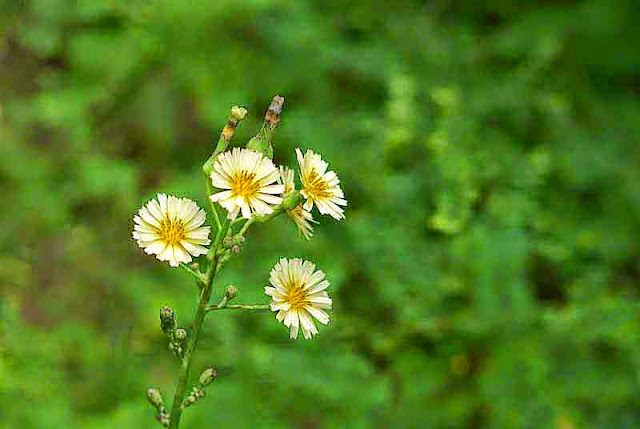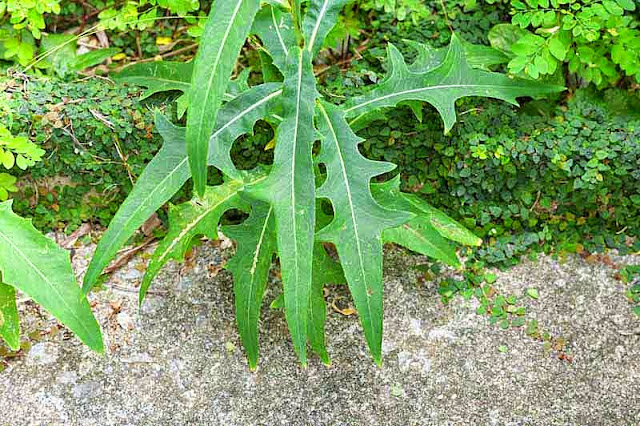An Edible Plant Growing in the Wild
The flowers had me stumped because, they couldn't be found in any flower books, I have.
So, I walked to a flower shop and asked if they could identify them.
The lady searched online but, couldn't find anything, that looked the same.
Next, I took two images and asked a few Japanese Facebook friends for help.
Knowing, the leaves of the plant, might be helpful, I included this image.
One of my friends came back to me with, Lactuca indica.
That's the Latin name for Indian Lettuce so, I was up and running.
Over at Encyclopedia of Life, I found some photos for verification.
The leaves and stems can be eaten in salads or boiled, stir-fried or cooked in soups.
Visit the World Vegetable Center if, you don't believe me.
Among many other uses, sap from the plant can be used to treat warts.
That was something, I found over at Plants For a Future.
Even the US Library of Medicine mentions the antioxidant properties of this plant.
So, it got me thinking. Maybe, I'll borrow a few of the seeds and, grow my own.
In Japanese the plant is known as Nigana (ニガナ) Njana in Okinawan dialect.
UPDATE
Digging a bit deeper into the subject plant, a few other things should be noted.
In Japanese the plant is known as Nigana (ニガナ) Njana in Okinawan dialect.





No comments:
Post a Comment